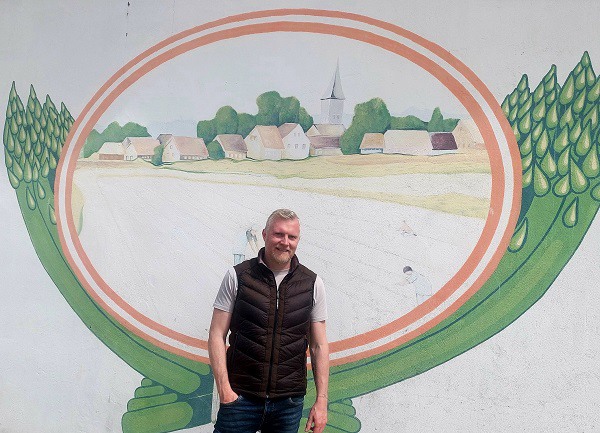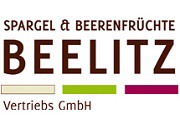After the rather difficult asparagus year of 2022, German asparagus growers can look forward to a regular season again, which Matthias Ment, sales manager of Spargel & Beerenfrüchte Vertriebs GmbH from Beelitz, can confirm to us. "The quality of our asparagus is very good. The only thing that still leaves something to be desired is the quantity. The cool, sunless weather ensured that the plants here in our east didn't get going, which is why we were permanently undersupplied."
 Matthias Ment
Matthias Ment
Thicker calibers are increasingly popular
Ment has seen the greatest demand for 18+, 22+ and between 16-26 calibers, respectively. "However, consumers have now realized that thicker calibers are also good quality, which is why they are becoming increasingly popular. The larger calibers have always been very well-known and popular in southern Germany, with interest also arriving peu à peu in the north," Ment says. For green asparagus, calibers 12-20 are the priority for sales.
"Peeled asparagus is experiencing steady growth, but demand has established itself at a good level over the past two to three years. The peeled product is bought in particular by end consumers who are very busy in terms of time, both at work and in their private lives," Ment knows.
Demand much better than last year
After the previous year's experience, people were originally skeptical about 2023, given the ongoing news about inflation and multiple crises. "Demand developed much better than expected and is at a constant level, which is why we are regularly sold out or stocks are relatively empty," he observes. "In addition, asparagus producers quickly lowered the entry price to a price acceptable to consumers, who then quickly turned to German asparagus. At the same time, this allows us to keep current prices at a good level compared to the same time last year, which is of course very important for our producers."
No supply overlaps with imported goods
According to Ment, the food trade is once again focusing more on domestic asparagus. "The advantages of German asparagus may not have been communicated properly to the outside world in recent years, but this has improved this year. However, there is still a clientele of buyers who pay very close attention to prices or are forced to pay attention to prices. In this respect, imported goods, for example from Greece, which are subject to much lower production costs, also have their justification."
There would hardly have been any supply overlaps between the imported and local goods. "Greek asparagus came on the market early this year, while the German supply came on later. That's why we didn't necessarily perceive Greece as a competitor, since the different origins arrived at different stages. We did not have this situation last year, because the Greek product came to the market very late last season, while the German asparagus arrived earlier - and in large quantities. As a result, the two origins had such a strong price war that both German and Greek growers ran into difficulties."
Larger containers gain importance
"My impression is that the larger containers are becoming more established. A few years ago, the standard container was the 500-g unit. However, food retailers are now also relying on 1-kg and larger units at the point of sale. 1.5 kg units are mostly sold in cardboard baskets. However, asparagus bundles of 500 g to 1 kg are definitely offered in flowpacks. The film used for this is 100 percent recyclable and it is also the best packaging in terms of product protection. The asparagus shoe packaging, which used to be or is still partly used in Greece, is not conducive to sales because the asparagus can dry out extremely quickly and lose weight. For green asparagus, on the other hand, this packaging is well suited because it would change negatively in the flowpack."
Pale asparagus - a quintessentially German product
With its diverse range of products, Spargel & Beerenfrüchte Vertriebs GmbH is able to serve two customer groups at once, he says: "On the one hand, there is the traditional buyer group for the raw produce sector, which still wants to peel the produce and perhaps process it into soup, etc.," he says. On the other hand, there is the buyer class that is strongly involved in the working world and also has little time privately and is therefore more receptive to the peeled asparagus or partial convenience goods. For that reason, the two supply channels don't cannibalize each other." The share of green asparagus is also increasing from year to year, he said, but it can't outpace pale asparagus. "However, nowhere is as much pale asparagus consumed as in Germany. It will stay that way."
Further information: Matthias Ment
Matthias Ment
Spargel & Beerenfrüchte Vertriebs GmbH
Beelitzer Str. 141
14797 Kloster Lehnin
Telefon: +49 3382 / 7410-0
E-Mail: info@beelitzer-spargel.de
Webseite: https://verkauf-beelitzer-spargel.de
